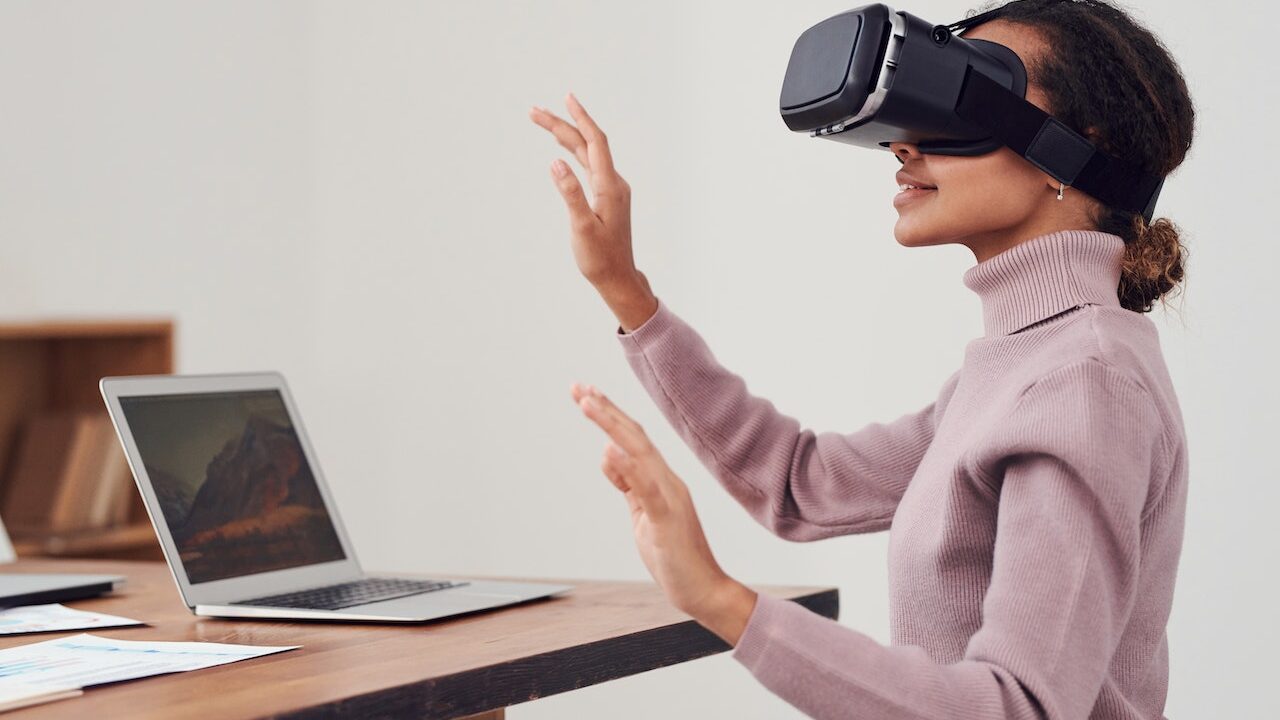
Few technological discoveries have caught the imagination as much as Virtual Reality (VR). VR, which was formerly confined to science fiction novels and futuristic films, has fast grown into a tangible, revolutionary tool that promises to revolutionise the way we engage with digital worlds. But, exactly, what is Virtual Reality? How does it operate, and why is it causing such a stir in many industries? This article seeks to demystify the realm of virtual reality by providing a complete introduction to its physics, applications, and future possibilities.
Virtual reality (VR) is a game-changing technological development that has altered our perception of and interaction with digital worlds. At its core, virtual reality provides a simulated experience, immersing users in a three-dimensional world that can either mirror our own or take us to realms previously only imagined.
The power of virtual reality resides in its ability to create a sensation of presence. Users are immersed in a virtual scene using customised headphones outfitted with sensors and stereoscopic displays. These gadgets track the user’s head motions and change the user’s perspective in real time, while spatial audio techniques increase the impression of “being there.” The end result? A computerised experience that feels quite realistic.
Beyond its most well-known application in gaming, VR’s potential spans a wide range of industries. Students in education can go on virtual field trips to see ancient ruins or dive deep into the ocean’s abyss. Healthcare practitioners use virtual reality (VR) to practice complex procedures without the hazards of the real world. Meanwhile, virtual property tours in the real estate industry give potential purchasers an immersive preview from the comfort of their own homes.
The Essence of Virtual Reality
Virtual reality is, at its foundation, a simulated experience that might be comparable to or completely distinct from reality. It’s a technology that immerses people in a three-dimensional environment and allows them to interact with it in real time. Unlike typical screen experiences, in which users are passive viewers, VR immerses consumers in an event, transforming them into active participants.
The Mechanics Behind VR
The magic of VR lies in its ability to trick the human brain into believing it’s somewhere it’s not. This is achieved through a combination of advanced hardware and software. VR headsets, equipped with sensors, track the movement of the user’s head and adjust the user’s view in the virtual world accordingly. Stereoscopic displays provide depth, and spatial audio adds another layer of realism. Together, these elements create a convincing illusion of being in a different reality.
Virtual reality (VR) is a symphony of synchronised technologies that generate immersive experiences, rather than just captivating sights. VR works by mimicking our natural experience of the world in a controlled digital context. The VR headset, which is outfitted with sensors that capture head motions, is the major tool for this. As users move their heads, the visuals inside the headset alter in real time, giving the impression that they are in a different location.
Stereoscopic displays are quite important. They simulate depth in the actual world by displaying slightly different images to each eye. Furthermore, spatial audio techniques localize sound, making it appear to come from precise directions and distances.
Aside from sight and sound, advances in haptic technology now allow users to “feel” virtual items. This is accomplished through the use of tactile feedback devices such as gloves or controllers.
Applications of Virtual Reality
While gaming is often the first application that comes to mind when thinking of VR, its potential extends far beyond entertainment:
Education: VR can transport students to ancient civilizations, deep underwater environments, or even outer space, offering an immersive learning experience.
Healthcare: Surgeons are using VR for training, allowing them to practice complex procedures in a risk-free environment. Additionally, VR therapies are emerging as treatments for PTSD and phobias.
Real Estate: Potential buyers can take virtual tours of properties, walking through homes or apartments without ever leaving their own residence.
Training & Simulation: From pilots to firefighters, professionals can practice their skills in simulated VR environments, preparing them for real-world scenarios.
The Future of VR: What Lies Ahead
The current trajectory of VR is steeply upward. As technology continues to advance, we can expect VR experiences to become even more immersive and realistic. Innovations in haptic feedback, for instance, will allow users to “feel” virtual objects, adding another layer of immersion. Moreover, as VR becomes more accessible and affordable, its adoption will likely skyrocket across various sectors.
Conclusion
Virtual Reality is not just a technological fad; it’s a paradigm shift in how we experience digital content. As we stand on the cusp of a VR revolution, it’s clear that this technology will play a pivotal role in shaping the future of various industries. Whether for work, play, or education, VR promises to enrich our lives, offering experiences that were once thought impossible. As we continue to explore and harness the potential of VR, one thing is certain: the virtual world holds endless possibilities.
VR’s capabilities will continue to evolve as technology advances. The barrier between the virtual and actual worlds will become even more blurred, allowing for more detailed and interactive experiences. VR is a tribute to human invention, bridging the gap between reality and the digital frontier, from improving professional training to reinventing enjoyment.
Finally, Virtual Reality is a transformational tool that is altering our digital relationships and widening the boundaries of possibility. We are set to find and create new dimensions of experience as we move deeper into the VR era, forever transforming the way we connect, learn, and explore.








